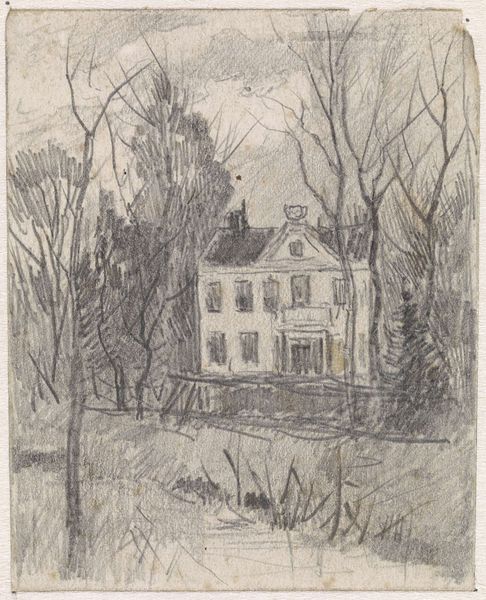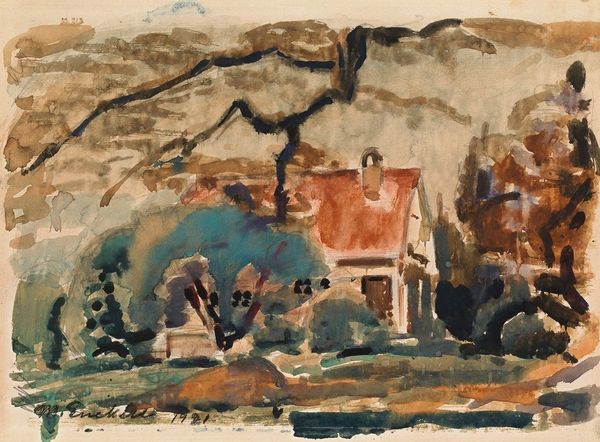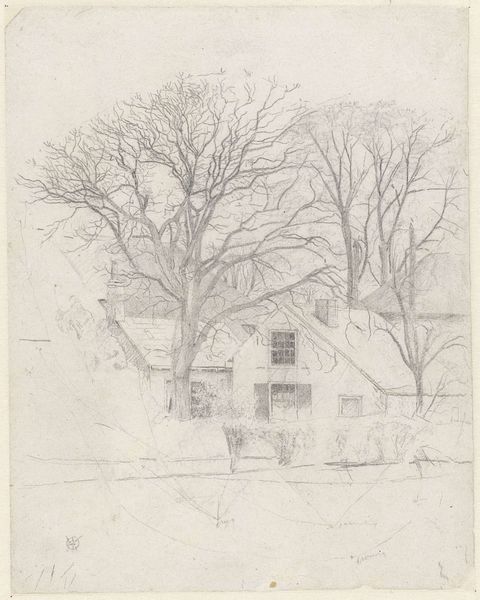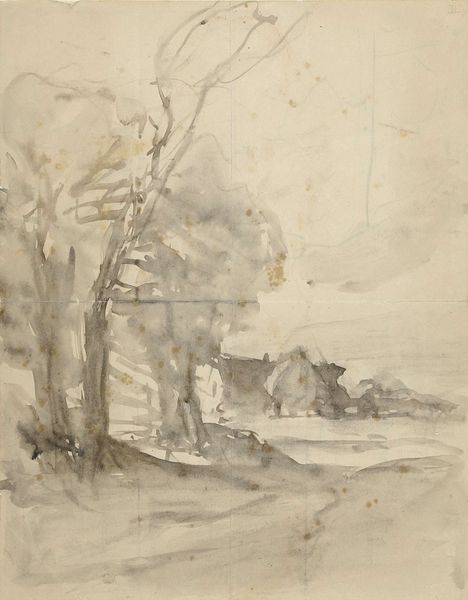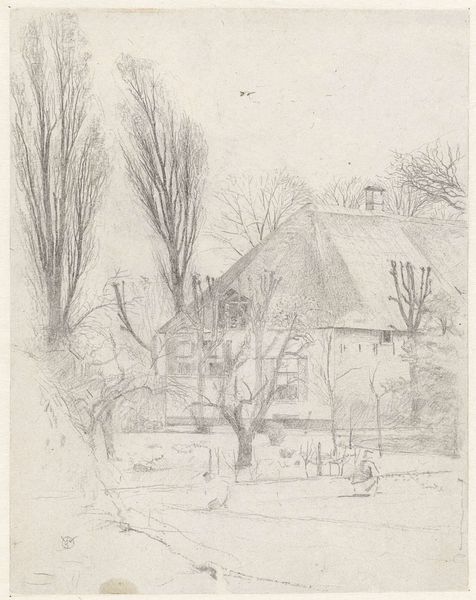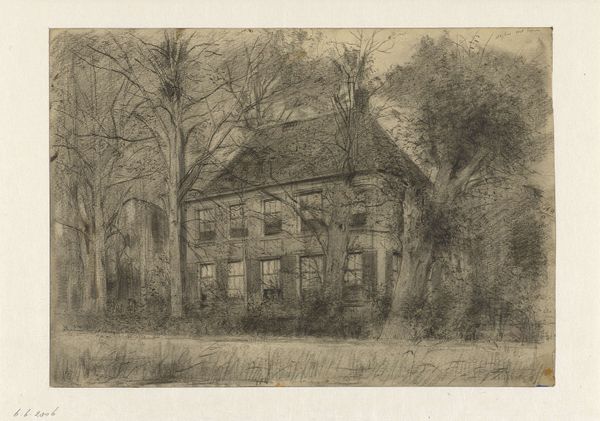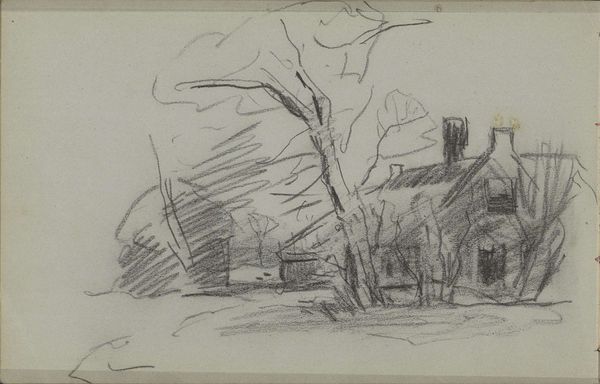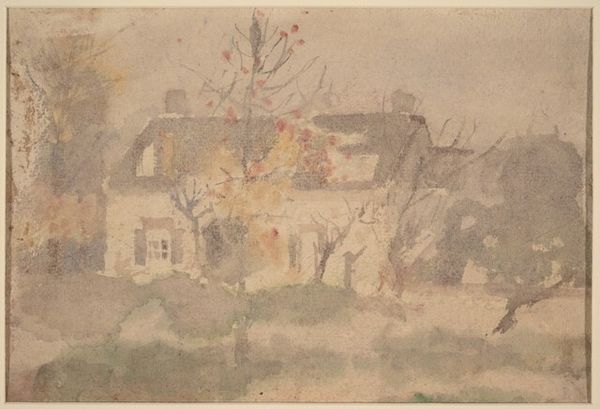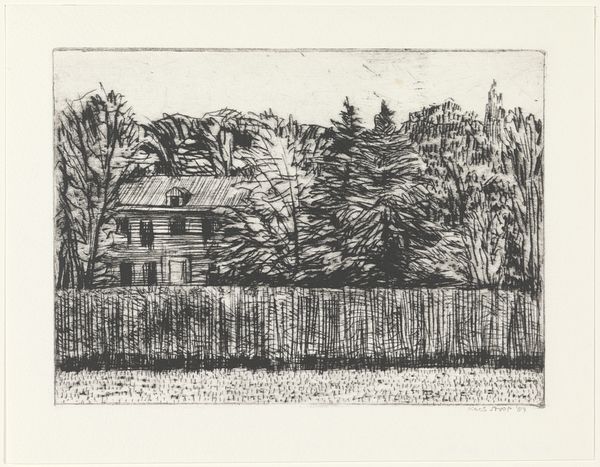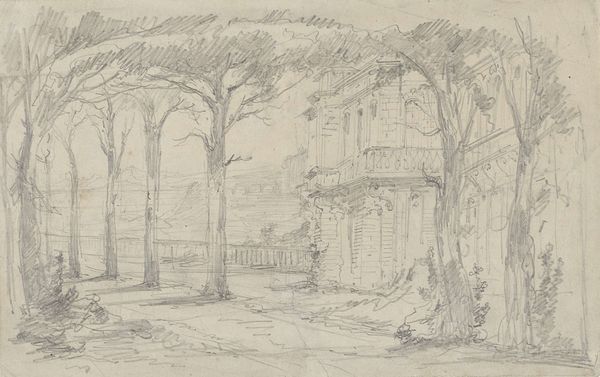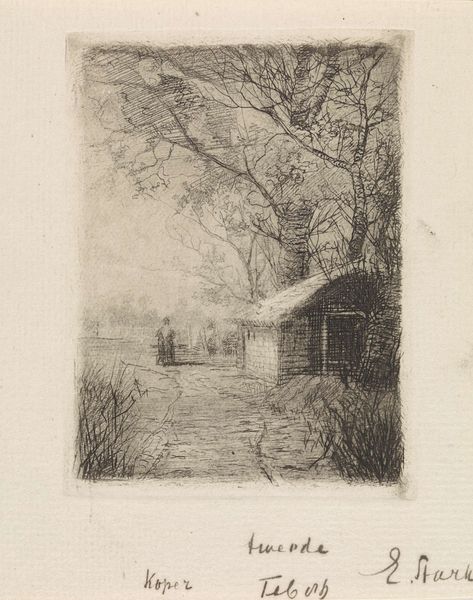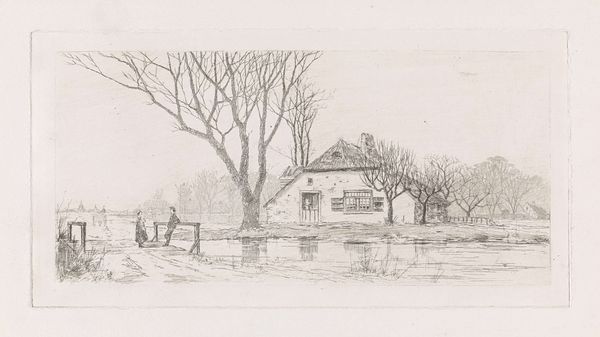
drawing, plein-air, watercolor, architecture
#
drawing
#
impressionism
#
plein-air
#
landscape
#
watercolor
#
architecture drawing
#
watercolor
#
architecture
Copyright: Public Domain: Artvee
Curator: So, let's take a look at "Buitenhuis en tuin," a watercolor drawing attributed to Jozef Israëls, dating from 1834 to 1911. What are your first impressions? Editor: It feels muted, almost like a faded memory. The composition relies heavily on vertical lines—those tree trunks establish a strong rhythm, yet the overall mood is soft and indistinct. It lacks defined contrast, which affects the depth, don't you think? Curator: Yes, the lack of contrast creates a sense of unity, a common thread in plein-air works, reflecting the light and atmospheric conditions of that particular moment. I find it significant that Israëls, celebrated for his depictions of working-class life and social realism, also turned to these more serene, introspective landscapes. It broadens our view of him, doesn't it? Editor: Absolutely, but I can't help focusing on how the architectural forms are secondary to the rendering of light. Notice the lack of strong contouring. The structure is sketched rather than carefully delineated. It is as if the house, the trees, and the grounds share in one unifying aesthetic. The values all feel remarkably close. Curator: Well, in Dutch art of that time, the rural landscape was becoming increasingly important as a subject, partly as a symbol of national identity during a period of significant social change. Israëls likely saw these scenes not just for their aesthetic beauty, but as reflections of a certain pastoral ideal and the changing dynamics of Dutch society. Editor: Still, technically speaking, the application of watercolor seems rapid, spontaneous. I would imagine the artist worked in the field trying to transcribe not only visual elements but also sensory perceptions. What can we say of that light shining through the branches and bouncing off the façade of the building? The formal elements here serve as the core message of the image. Curator: And that makes it all the more intriguing when considering his more overtly political subjects. It perhaps reminds us of how deeply entwined were the personal and the political for artists of his generation. Perhaps we see here not simply a garden, but an image charged with the very meaning of 'Dutch-ness'. Editor: Ultimately, both views provide insight into the artist's perspective, regardless of what interpretive lens is chosen. Curator: Indeed. Both narratives, intertwined.
Comments
No comments
Be the first to comment and join the conversation on the ultimate creative platform.
